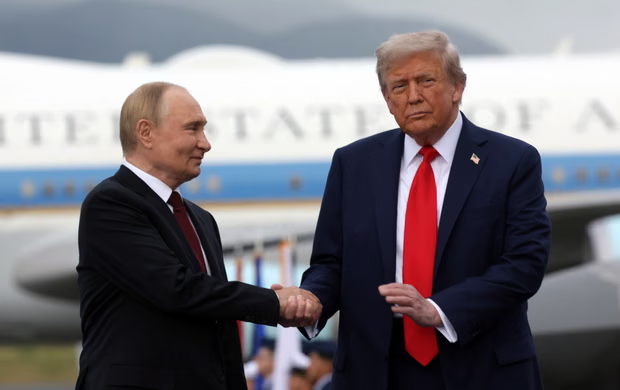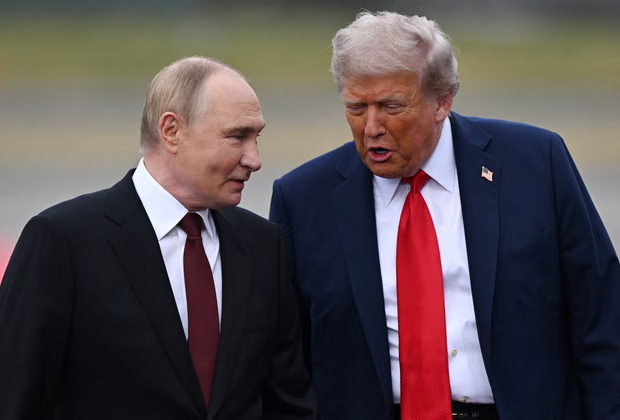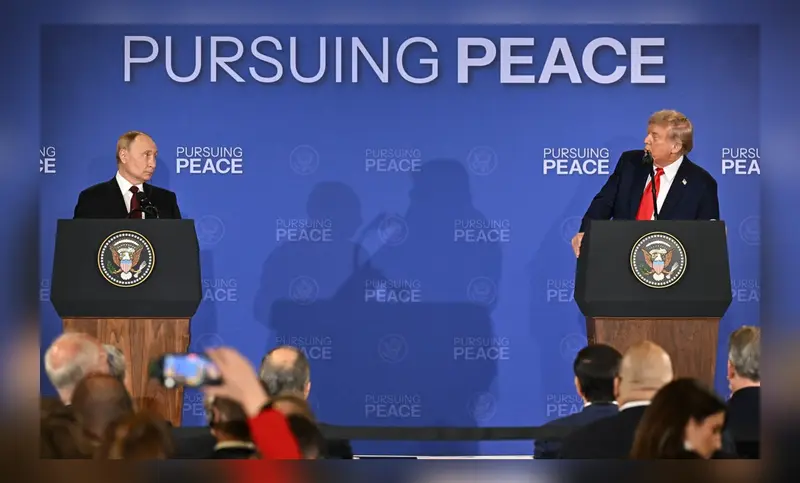The much-publicized meeting in Alaska between U.S. President Donald Trump and Russian President Vladimir Putin wrapped up without a ceasefire, agreement, or concrete steps toward ending the Russia–Ukraine war. Despite the carefully staged optics—handshakes, warm greetings, and a shared limo ride—the outcome amounted to little more than vague promises and talk of “progress,” underscoring the reality that in this conflict, no deal exists until something binding is reached.

All Appearances, No Substance
After nearly three hours of closed-door discussions, Trump admitted, “We didn’t get there,” before leaving without taking questions. His earlier assertion that the talks had only a “25% chance” of failing now stands as a blow to his self-proclaimed image as a master negotiator.
Putin, portraying himself as “genuinely interested” in ending what he called a “tragedy,” offered no concessions. Instead, he reiterated Russia’s longstanding demands: halting NATO’s eastward expansion, recognition of territorial gains, and guarantees against Ukraine’s militarization. With decades of diplomatic experience, Putin maintained a firm stance while still leaving the door open to future talks.
Trump claimed “many points were agreed to,” but admitted one major disagreement persisted—without revealing what it was. His plan to soon call Ukrainian President Volodymyr Zelensky and European leaders was of little comfort to Kyiv, which had been excluded from the summit. Putin’s parting words—“Next time in Moscow”—hinted at further meetings, though a trilateral summit including Ukraine seems unlikely.
For Russia, the goals remain unchanged: consolidate territorial control, block NATO membership for Ukraine, and push for sanctions relief. The Alaska summit offered Moscow an opportunity to appear diplomatic without ceding anything of substance. Meanwhile, Zelensky reaffirmed Ukraine’s rejection of any territorial concessions, finding some relief that no “land-for-peace” deal was struck, though the absence of a ceasefire means the war grinds on.
Strategic Positions Before Talks
Moscow came prepared to discuss ceasefire terms only if its battlefield gains were preserved. Putin ignored Trump’s threats of “severe consequences” and held firm to Russia’s established conditions.
Ukraine, sidelined from the negotiations, insisted on sovereignty and territorial integrity as non-negotiable, making progress on a ceasefire almost impossible.
Washington pursued what Trump called “exploratory diplomacy,” floating unspecified compromises that unsettled allies. His inconsistent approach—alternating between tough rhetoric, pragmatic hints, and last-minute pressure from Europe and Ukraine—left Putin with the advantage of clarity and leverage heading into talks.
Implications of the Stalemate
For Ukraine, the outcome was bittersweet: no risky concessions were made, but neither was there respite from daily bombardments. For Russia, the summit provided propaganda value, with Putin appearing as Trump’s equal on the world stage. For Trump, the lack of tangible results undermines his narrative of being a dealmaker, especially after setting his own benchmark for success.
Globally, the war remains unchanged—locked in trench warfare—while the U.S. signaled willingness to engage Moscow directly, even without Ukraine at the table. That precedent could unsettle both Kyiv and NATO allies.
Looking Ahead
The inconclusive summit will not halt Russia’s military push; instead, it may embolden Moscow to keep advancing while using the diplomatic stage for legitimacy. Back-channel communications and another high-profile but low-yield meeting are possible.
The absence of a flawed agreement may preserve NATO’s cohesion and sustain sanctions pressure, but repeated fruitless summits risk eroding U.S. credibility and granting Russia time to regroup militarily.
Ukraine and NATO allies will now press Trump to reinforce sanctions and expand military support. Yet any such steps could undercut whatever informal understandings emerged in Alaska. Putin’s confidence, strengthened by battlefield success, ensures he negotiates from a position of strength, while Europe and Kyiv remain dependent on Washington’s resolve.

Conclusion
What was billed as a potential turning point instead became a stage-managed non-event. Trump showcased diplomacy for the cameras but left without gains. Putin reaped international legitimacy while conceding nothing. Ukraine was left watching from the sidelines—no land lost, but no relief from war either.
Sometimes, no agreement is preferable to a bad one. But for Ukraine, the absence of progress means unrelenting hardship, while the danger grows that repeated inconclusive summits could normalize a frozen conflict—tilting the advantage further toward Moscow.



